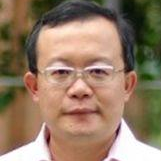Joint Special Issue With OPTIC 2019
A special issue of Applied Sciences (ISSN 2076-3417). This special issue belongs to the section "Optics and Lasers".
Deadline for manuscript submissions: closed (30 November 2020) | Viewed by 17160
Special Issue Editors
Interests: optical design; optical testing; opto-mechatronics system; human vision; Silicon photonic
Special Issues, Collections and Topics in MDPI journals
(2) Institute of Photonics System, National Chao Tong University, Taiwan
Interests: optical system design, lens design; laser speckle reduction
(2) Graduate Institute of Precision Engineering, National Chung Hsing University, Taiwan
Interests: optical engineering; spectrum manipulation
(2) Associate Professor, Department of Optics and Photonics, National Central University, Taiwan
Interests: optical testing; interferometry
(2) Technical Expert of Optical Research Section, Nikon, Japan
Interests: optical design; optical testing
Special Issue Information
Dear Colleagues,
This Special Issue solicits papers for the display section of the Optics and Photonics Conference (OPTIC) 2019, which will be held in the National Chun Hsin University, Taiwan, from the 4th to the 6th of December 2019. OPTIC, Taiwan, is the most popular annual meeting for Taiwan’s optics and photonics community, which has attracted more than 1000 contributions and around 2000 participants from all over the world, and has traditionally provided a forum for disseminating the science and technology of optics and photonics developed by university research groups and institutes worldwide. Thanks to an attendee from Hsinchu Science Park, Zhunan, Taiwan, this Special Issue will attract papers pertaining to developments in lighting technology, display technology and their various applications. In addition, OPTIC 2019 will encourage the National Science Council, Taiwan, the Industrial Technology Research Institute of Taiwan (ITRI), the Taiwan Photonics Society (TPS), the Taiwan Optical Design and Fabrication association (TODF), Taiwan, and many display industries nearby to disseminate the science and technology for advanced lighting technology and optical design, opto-mechatronical system and testing, and the advanced design of further optical system technology to be applied to various components and systems.
Contributions from new or industrially related areas are encouraged. These include light source from solid state lighting, LED, phosphor, organic light emitting diodes, infrared and UV lasers, integral optical and opto-mechanical system design, as well as active matrix integration, and various automotive applications, such as laser head-up display (HUD), head-mount display (HMD), backlight systems, bio-medical imaging, and industrial imaging. Advanced semiconductor physics, semiconductors, materials and technologies for new or improved forms of lighting applied to advanced optical and opto-mechatronical system design are welcome. Newly developed optical components, from UV to infrared, related to lighting sources or opto-mechatronical system applications, such as liquid crystal lenses and MEMS; optical metrology for display technology such as image evaluation, laser speckle effects, color reproduction, color management color appearance, and human vision are also invited. Most recently the scope has expanded to include contributions from 3D imaging, holography, and emerging display technology applications—these too are encouraged.
Outstanding lectures and posters from OPTIC 2019 will be invited to submit to this Special Issue of “Smart Opto-Mechatronical System Design and Testing”. All submitted papers, including invited papers, will undergo peer review according to the Applied Science Guidelines. Again, submissions to the Special Issue are open to all researchers in this field all over the world, while attendees and researchers who plan to go to the meeting are particularly encouraged to submit their research.
Papers are solicited in but need not be limited to the following areas:
1) Advanced optical design, optimization, and simulation
2) Optical testing including modulation transfer function (MTF) and interferometry;
3) Novel lighting technology including LED, laser and organic light emitting diodes applied to optical or opto-mechatronical systems;
4) Novel smart opto-mechatronical system design, simulation, testing and new applications;
5) Electronic and flexible display modes, reflective, transmissive and bi-stable displays applied to bio-medical system or opto-mechatronical systems;
6) Advances in physics, semiconductors, and materials applied to new forms of opto-mechatronical systems;
7) 3D imaging, from holography in particular;
8) Newly developed integrated opto-mechatronical design with display, such as micro-display or pico-projection;
9) Laser display applied to newly developed optical storage systems;
10) Lighting and display technology applied to bio-medical imaging, industrial, and automotive imaging;
11) New devices for display such as the liquid crystal lens, MEMS and smart projection optics;
12) Wave front coded technology applied to further opto-mechatronical system design;
13) Optical metrology for display technology: image evaluation, speckle effects, color reproduction, color management, and color appearance;
14) Adaptive optics applied to large telescopes for remote sensing;
15) Alignment, tolerance, and verification of laser display systems;
16) Green displays;
17) Display imaging in relation to human vision;
18) Touch and interactive applications…
Prof. Yi chin fang
Prof. Jui-Wen Pan
Prof. Han Pin
Prof. Chao-Wen Liang
Dr. Tatsuro Otaki
Prof. Baorong Ni
Guest Editors
Manuscript Submission Information
Manuscripts should be submitted online at www.mdpi.com by registering and logging in to this website. Once you are registered, click here to go to the submission form. Manuscripts can be submitted until the deadline. All submissions that pass pre-check are peer-reviewed. Accepted papers will be published continuously in the journal (as soon as accepted) and will be listed together on the special issue website. Research articles, review articles as well as short communications are invited. For planned papers, a title and short abstract (about 100 words) can be sent to the Editorial Office for announcement on this website.
Submitted manuscripts should not have been published previously, nor be under consideration for publication elsewhere (except conference proceedings papers). All manuscripts are thoroughly refereed through a single-blind peer-review process. A guide for authors and other relevant information for submission of manuscripts is available on the Instructions for Authors page. Applied Sciences is an international peer-reviewed open access semimonthly journal published by MDPI.
Please visit the Instructions for Authors page before submitting a manuscript. The Article Processing Charge (APC) for publication in this open access journal is 2400 CHF (Swiss Francs). Submitted papers should be well formatted and use good English. Authors may use MDPI's English editing service prior to publication or during author revisions.
Keywords
- Optical design
- Optical testing
- Opto-mechatronical systems
- Human vision
- Light source application
- Smart display technology...










